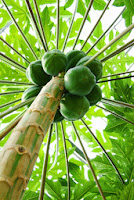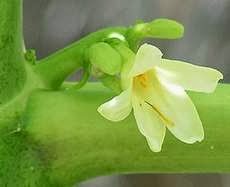It
can be greatly confusing, especially in places where cultural diversity is a
way of life. Costa Rica embraces a great number of cultures, and every one of
them contributes to the tropical cuisine experience.
It
is somewhat normal to have a “where am I” experience when we try to buy seafood
in Costa Rica and/or order from the restaurant menu. Many times we end up feeling
a little disappointed and confused when we are sold or served something we do
not recognize as the ‘fresh water shrimp’ we have been expecting to enjoy.
by several different names in different parts of the world, and to make matters a little more complicated, the same name can be given to different variations of the species. That rather explains why is almost impossible to lift the veil of confusion all at once. To begin with, the terms' shrimp and prawn originated in Great Britain.
Shrimp is applied to smaller species. The word prawn is never given to the very small species, but always applied to most of the larger forms.
 There
are some exceptions in Australia, where small species are called prawns, and some
prawn-like crustaceans are referred as shrimps.
There
are some exceptions in Australia, where small species are called prawns, and some
prawn-like crustaceans are referred as shrimps.
Nevertheless,
it is fair to say: that most commonly,
shrimps are the small crustaceans with a length of three inches or less, often found
in shallow waters and caught by net. Prawns
can be as large as twelve inches long, and sometimes harvested by trapping and trawling.
Even
though sometimes the freshwater prawns and the saltwater shrimp, look very
similar, and even their texture is alike, the freshwater prawns don’t have the
strong flavor of the saltwater shrimp.
River
prawns have a fresher taste, and their bodies absorb any type of marinade
in a manner of minutes. It is a real treat!
Here
in Costa Rica, we have the variety of fresh water shrimp (Macrobrachium carcinus)
also known as langostino de río, camarón de río, or camarón de agua dulce, and it is one
of the largest freshwater shrimp of
the east coast of the Americas, it is commercially fished in certain parts of
the region.
In
exceptional cases, after several years of growth, the adult M. carcinus can
reach up to 18 inches (45.7 centimeters) in length and may weigh up to 1 pound
(.45 kilograms).

Farming
fresh-water shrimp or river prawns
has been a growing practice in many countries, before the year 2000, the only
species farmed was the giant river prawn, marobrachium resenbergii; currently,
there are around 200 species of the genus' marobrachium living in the tropical
and subtropical climates of many countries and continents except Europe and
Antarctica.
the climate, it can have blue or orange claws, blue, brown, or gray bodies.
They
have 10 legs; the second pair of equal size legs is the biggest and has a
pincher. Its head is as big with stalked eyes. It has two sets of antennas, the
second larger than the first.
Species
of the freshwater prawn are distributed throughout the tropical and subtropical
zones of the world. They are found in most of the inland freshwater areas,
including lakes, rivers, swamps, irrigation ditches, canals and ponds, as well
as in estuarine areas. Some species prefer rivers containing clear water, while
others are found in extremely turbid conditions. http://en.wikipedia.org/wiki/Decapoda

Crayfish
is technically a decapod crustacean, related to lobsters, and
crabs.
Crayfish
is found in lakes, streams, and rivers, just like the fresh water prawns and
langostinos.
Keep
in mind; however, that the crayfish in other countries around the world is
probably a different species, and may have quite distinct habits.
“Prawns”
and
“shrimps” are pretty much
the same; the only biological difference is that
prawns have their second abdominal flap (counting from the head towards the tail) overlapping the first and the third. And "Crayfish" and "crawfish" are names given to both of those freshwater crustaceans.
http://www.nefsc.noaa.gov/faq/fishfaq4a.html
prawns have their second abdominal flap (counting from the head towards the tail) overlapping the first and the third. And "Crayfish" and "crawfish" are names given to both of those freshwater crustaceans.
http://www.nefsc.noaa.gov/faq/fishfaq4a.html
Hopefully,
this will help you to see the difference where there seems to be only
similarities. One thing I can tell you for sure, when you taste it, you will
experience the difference.
Enjoy Costa Rica and its Seafood Gifts.






































